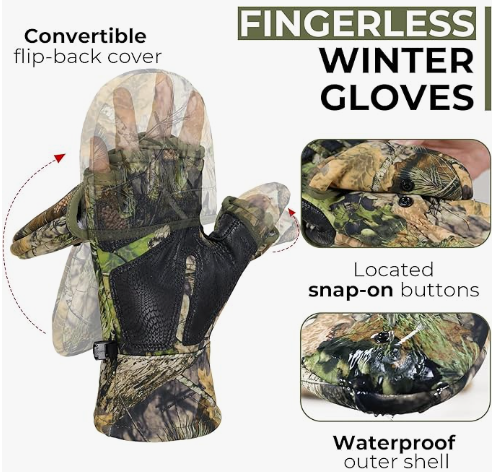When it comes to working out, gym gloves are often overlooked, but they play an important role in ensuring comfort, safety, and performance during your exercises. Whether you’re lifting weights, doing CrossFit, or cycling, choosing the right gloves can make a big difference. But with so many options available, how do you know which type is right for you?
What Are the Different Types of Gym Gloves?
There are several types of gym gloves, each designed for specific activities and needs. Let’s take a look at the most common types and their uses.
1. Full-Finger Gloves
- Description: These gloves cover the entire hand, offering complete protection.
- Best for: Weightlifting, CrossFit, and outdoor activities like hiking.
- Benefits: They provide full hand protection, reduce the risk of blisters and calluses, and offer wrist support in some models.
2. Fingerless Gloves
- Description: These gloves leave the fingers open, covering only the palm and part of the wrist.
- Best for: Activities where you need more dexterity, such as cycling, rowing, or general weight training.
- Benefits: Fingerless gloves are breathable and allow you to maintain a good grip while offering some palm protection.
3. Wrist Support Gloves
- Description: These gloves come with added wrist wraps to provide extra stability during heavy lifts.
- Best for: Powerlifting, deadlifts, and any exercise where wrist support is crucial.
- Benefits: They reduce the risk of wrist strain and help you lift heavier weights with more control.
4. CrossFit Gloves
- Description: Lightweight, flexible gloves that are specifically designed for the varied movements involved in CrossFit training.
- Best for: CrossFit, high-intensity interval training (HIIT), and functional fitness.
- Benefits: They offer great mobility, breathability, and durability to handle diverse exercises.
5. Lifting Straps (Not Gloves, But Useful)
- Description: Lifting straps help you grip heavy weights by wrapping them around your wrists and the barbell or dumbbell.
- Best for: Deadlifts, shrugs, and other exercises requiring extra grip strength.
- Benefits: They help prevent grip failure when lifting heavy weights, allowing you to focus on form rather than holding onto the bar.
How to Choose the Right Gym Gloves for Your Needs
The best gym gloves for you will depend on your workout routine. Here are some key factors to consider when choosing:
1. For Weightlifting:
If you’re focusing on lifting heavy weights, full-finger gloves with wrist support are a great choice. They provide both grip and stability to avoid wrist injuries during your lifts. Look for gloves made from durable materials like leather or synthetic leather.
2. For CrossFit and Functional Training:
If you’re into CrossFit or dynamic workouts, fingerless gloves or flexible wrist support gloves are ideal. They allow full finger movement while protecting your palms from rips and tears. Choose gloves made from breathable materials like mesh or neoprene for comfort.
3. For Outdoor Workouts or Extreme Conditions:
If you’re training outdoors in cold weather, full-finger gloves are a must. They protect your hands from the elements and ensure a good grip during lifting or other activities.
4. For General Fitness:
For lighter gym use or cardio, fingerless gloves or lightweight training gloves will offer comfort, grip, and flexibility without compromising hand movement.
Key Features to Look for in Gym Gloves
When shopping for gym gloves, consider these important features:
- Grip: Look for gloves with non-slip palms and fingers to ensure a secure hold on weights and equipment.
- Breathability: Gloves made from mesh or moisture-wicking materials keep your hands cool and dry.
- Fit: Choose gloves that fit snugly but aren’t too tight, allowing for full movement of your hands and wrists.
- Durability: High-quality gloves made from durable materials, like leather or reinforced fabric, will last longer, especially during heavy lifting.
- Comfort: Padding and soft linings can make your gloves more comfortable, especially if you’re doing long workout sessions.
Which Gym Gloves Are Best for You?
In short, the best gym gloves depend on your specific training needs:
- Weightlifters should choose gloves with wrist support and full coverage.
- CrossFit athletes benefit from flexible, breathable gloves.
- General fitness enthusiasts may prefer fingerless gloves for comfort and grip.
Ultimately, choosing the right gym gloves is an investment in both comfort and performance. The right pair will protect your hands, improve your grip, and help prevent injuries during your workouts.
Bonus Tip: How to Care for Your Gym Gloves
- Wash your gloves regularly to maintain hygiene.
- Let them dry completely after each use to avoid bacterial growth.
- Store them in a cool, dry place when not in use.









2 Responses
Helped me a lot, just what I was searching for : D.
Thanks a ton for the shout-out—knowing the site was helpful to you just made our day.
We’ll keep the good stuff coming!
All the best,